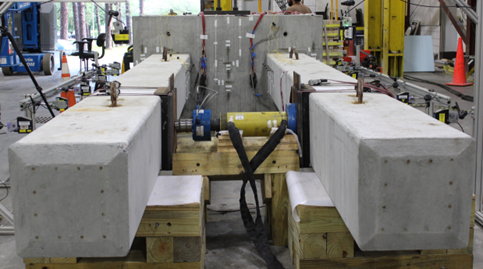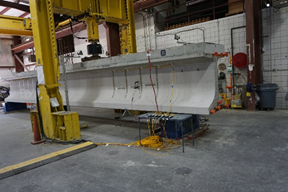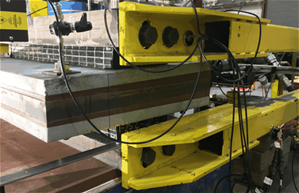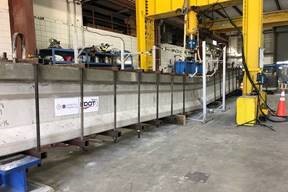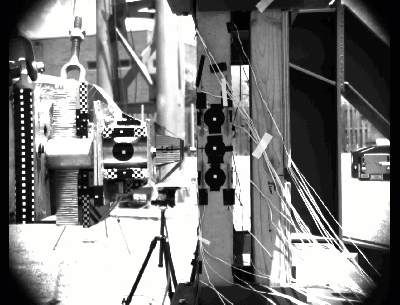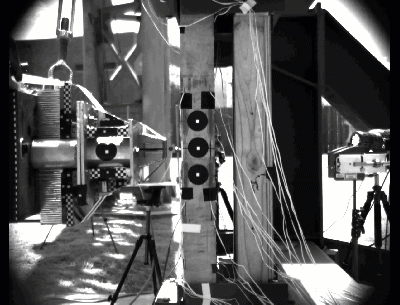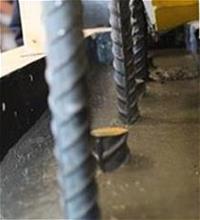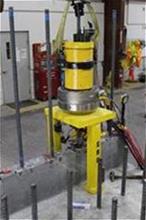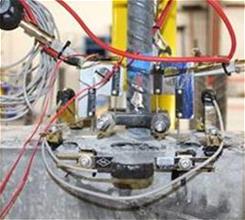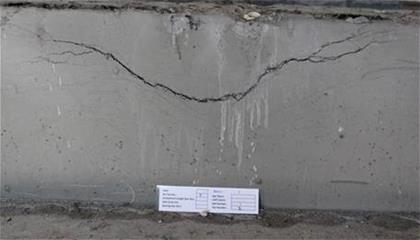Structures Design
Structures Research Center
SRC Home | Active Research | Completed Research | Contact Us |
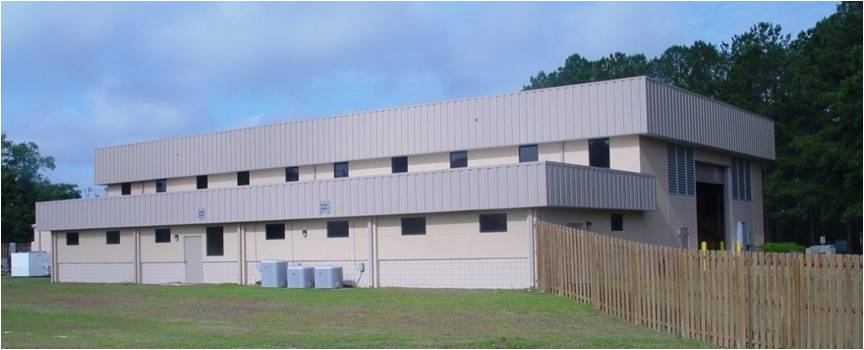 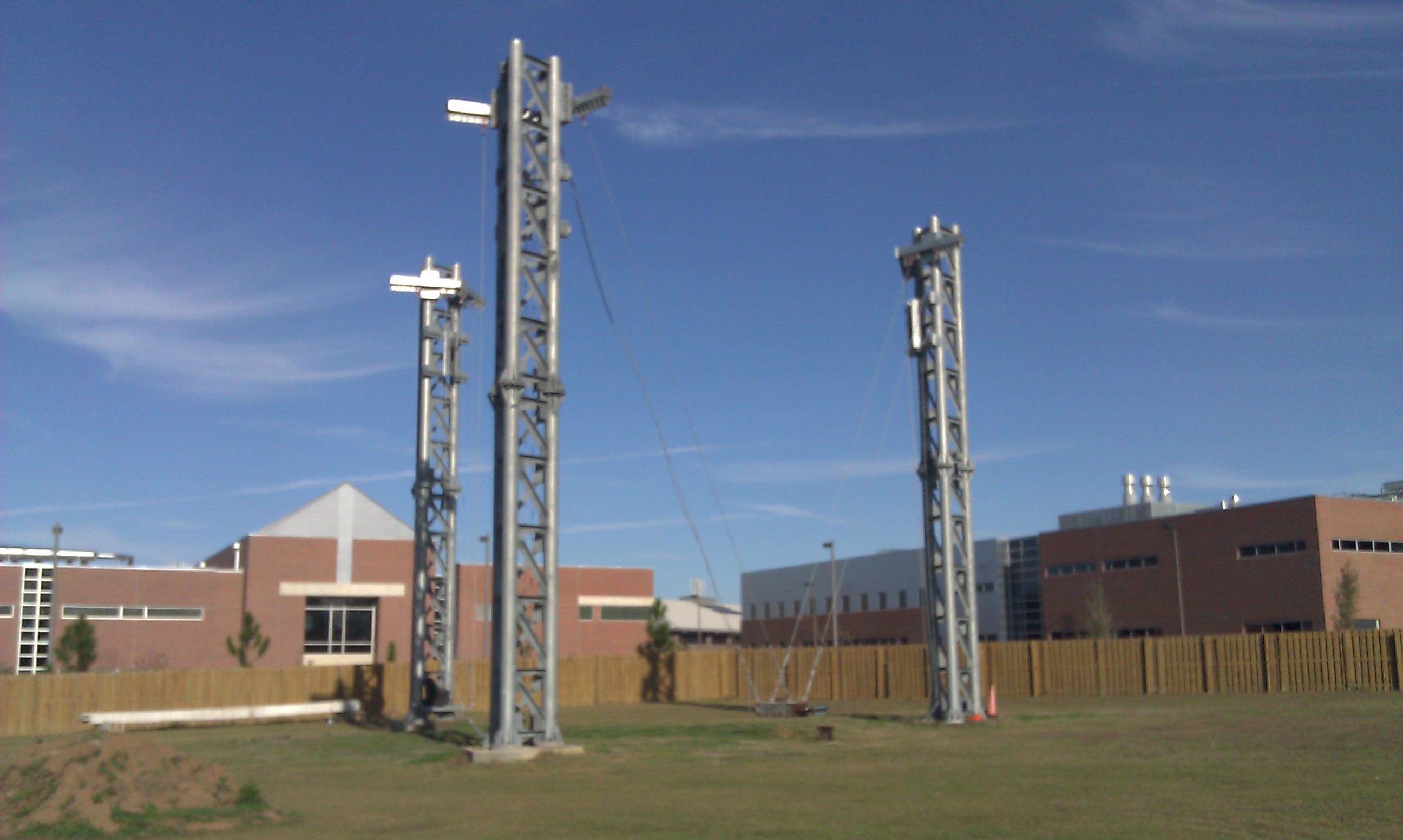 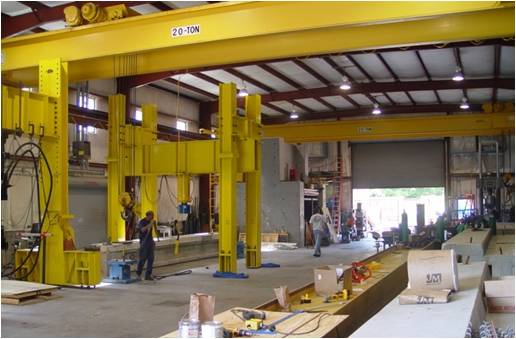 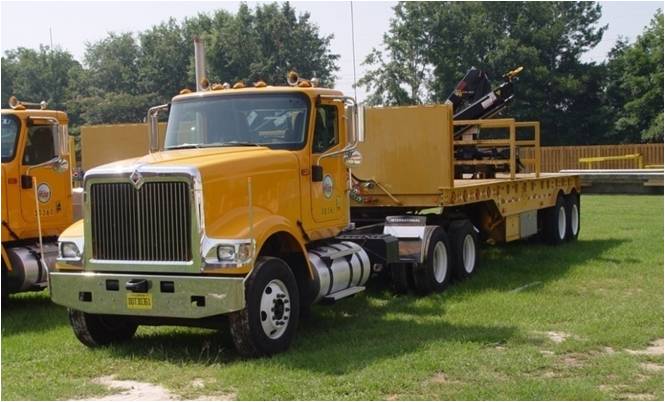 | Welcome
News
Posted: May 2nd, 2022
This research is focused on the performance of prestressed concrete-driven piles with GFRP ties during installation, including dynamic impact. The Geotech structures located in marine environments are often subject to intensive rebar corrosion. The GFRP spirals represent an efficient alternative to traditional carbon steel and CFRP confinement reinforcement. FDOT SRC pendulum-impact facility was successfully engaged to simulate the pile driving process and evaluate the response of CFRP, GFRP, and steel ties under impact load and bending. During installation, a driving hammer produces a complete cycle of loading and unloading. Six piles have been tested to validate and improve FDOT Standards Plans.
The primary objective of this study is to better understand the connection between the pile and pile cap to provide better design guidance to engineers. The research is also focused on determining the appropriate pile embedment length and details to achieve pinned or fixed connections. The factors impacting the level of fixity, such as embedment length, interface reinforcement, axial compression, etc. were identified. The test setup and experimental procedure were developed as Task 4 Deliverable. It includes ten specimens of 18x18in and 30x30in piles with different embedment depths, post-tensioning, and reinforcement details.
FDOT has moved from cementitious grouted post-tensioning tendons to a flexible filler, which will affect the shear strength of sections with webs containing such tendons. Little data are available on the shear strength of webs containing PT tendons with ungrouted ducts. The objective of this project is to investigate the serviceability and shear strength of I-girder webs containing draped post-tensioning ducts. Destructive testing was done in two phases with phase 1 being done on modified AASHTO Type III specimens and phase 2 using FIB-54 specimens. Phase 2 test results along with phase 1 results will be analyzed and compared to the existing web reduction requirements in the LRFD. Based on the results recommendations will be made for webs of girders containing empty ducts in the context of the current LRFD requirements for shear design.
The main objectives of this project are to develop a resilient short-span, slab-beam bridge solution with an optimized joint region design for UHPC connection between members, assess the strength and durability of UHPC-to-precast bond with joint surface treatment using exposed aggregates, evaluate the feasibility of simply for dead continuous for live load (SDCL) concepts, and recommend fabrication procedures, on-site construction practices, and erection tolerances to account for a sweep and differential camber. Currently, two sets of fatigue and strength tests evaluated the developed joint geometry under a large-scale, two-beam configuration scenario. The last ongoing test will evaluate locked-in stresses when a surcharge is implemented to level differential camber in a four-beam configuration scenario also under fatigue and strength tests.
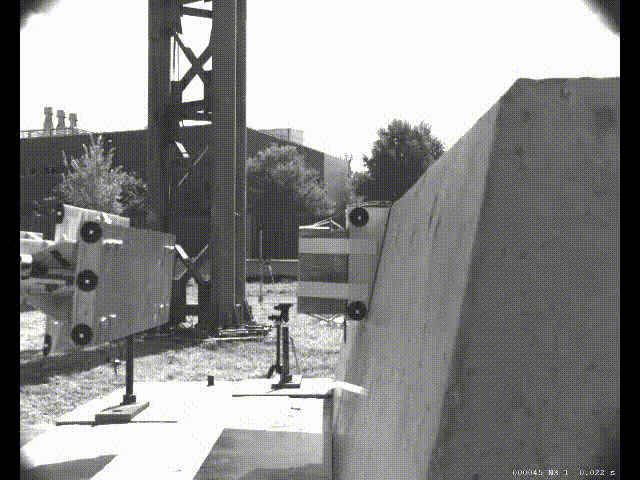 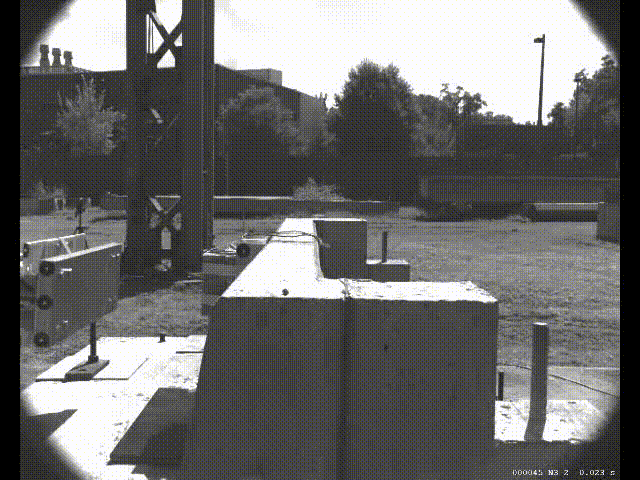 The main objective of this study is to investigate fiber-reinforced concrete (FRC) as a possible means of eliminating the need for installation of a rebar cage (consisting of flexural and shear steel reinforcing bars) in the FDOT 36-in. single-slope traffic railing. Instead of traditional rebar reinforcement, the improved mechanical properties of FRC are relied upon as a primary form of reinforcement within the concrete traffic railing. Pendulum impact testing has been used to investigate the structural adequacy of an FRC bridge railing, relative to a traditional rebar-reinforced concrete railing. The videos above were captured with a high-speed camera during a full-scale pendulum impact test on an FRC traffic railing, where minimal levels of deflection and damage were observed.
The objective of this project is to evaluate aspects of tapered elastomeric bridge bearing pad design, production, and behavior so that appropriate departmental policy regarding the use of such pads can be established. To evaluate design properties, flat and tapered bearing pads with various slopes are tested using a special-purpose test setup to study the effect of taper on axial and shear stiffness properties. The effect of taper on the slip behavior of pads is also being studied. Based on the data obtained from the physical testing, recommendations for bridge design using tapered pads will be provided.
Duplex high-strength stainless steel (HSSS) strands Grade 2205 are a viable alternative material in prestressed concrete members in harsh environments due to their high corrosion resistance. The objectives of this research are to provide insight into the design and fabrication of girders with 0.6-in. duplex high-strength stainless steel strands, to study the flexural behavior of girders prestressed with stainless steel strands, and to compare experimental results with those of control girders
The objective of this project is to develop an FRC mix that can be utilized in slip form construction of bridge rails, and provide enough resistance and durability to warrant the exclusion of longitudinal rebar in the bridge rail design. To evaluate impact resistance, physical tests should be dynamic. This first set of impact tests on small-scale slab specimens is intended to evaluate the developed mix for mechanical properties such as strength, toughness, fragmentation, fiber pullout or rupture, etc. If the results are favorable, full-scale testing of standard FDOT bridge rail geometry will ensue.
|


